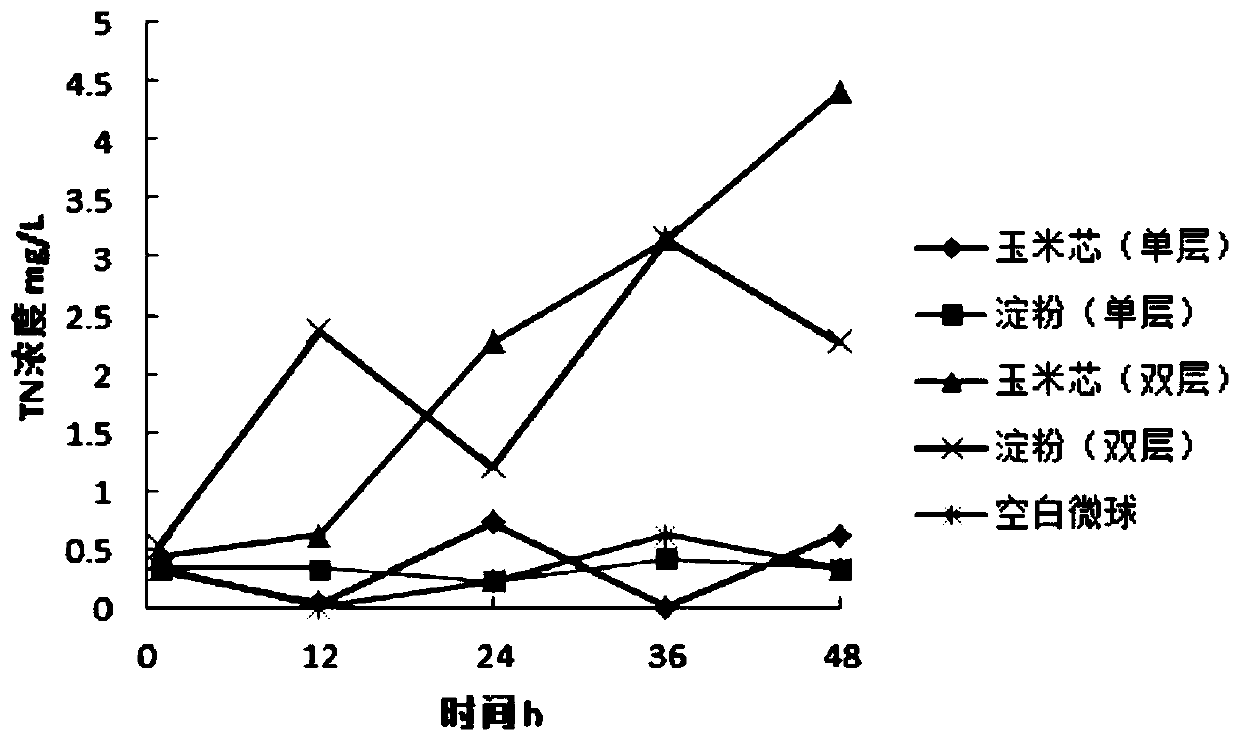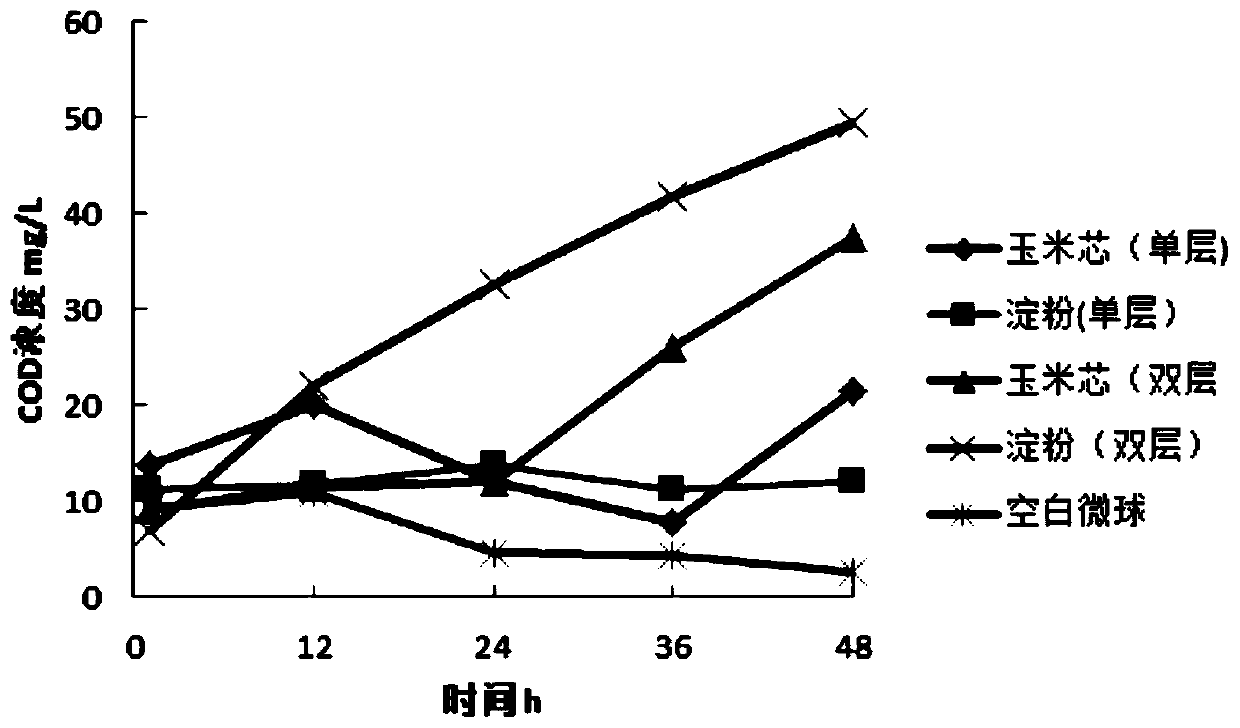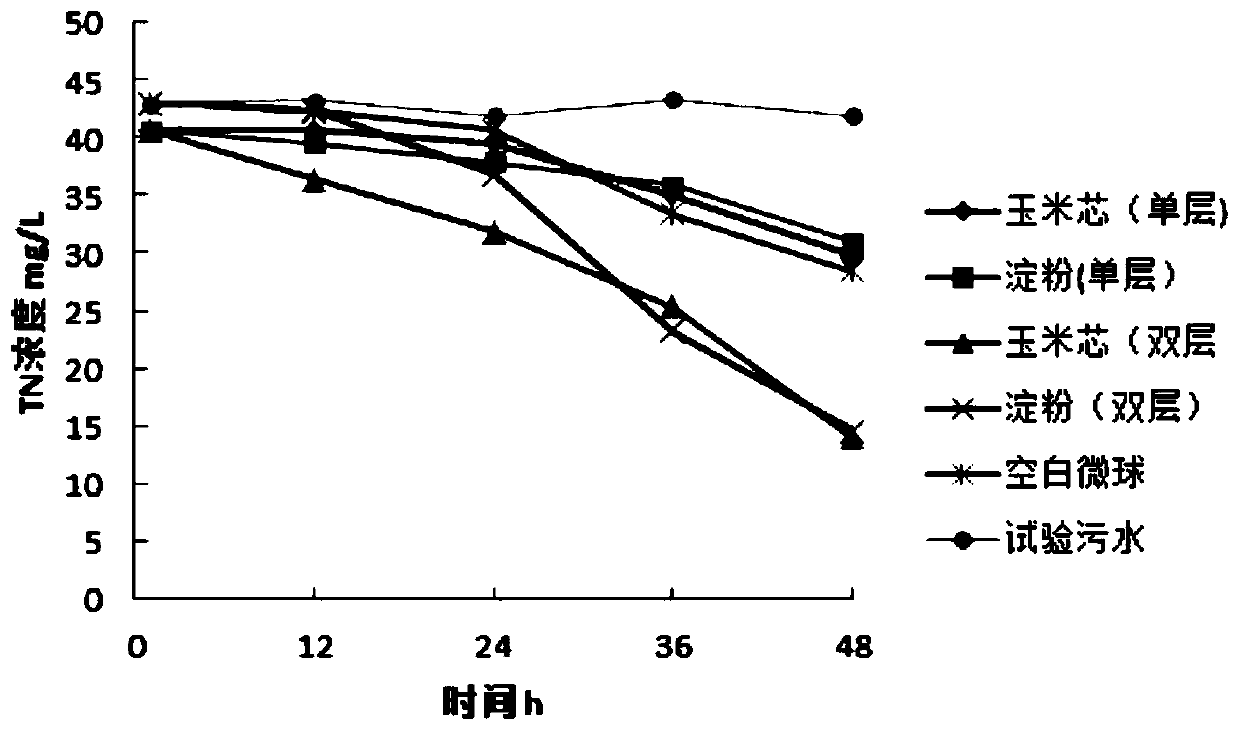Double-layer carbon source microsphere and preparation and application thereof
A technology of microspheres and carbon sources, applied in the direction of microsphere preparation, microcapsule preparations, chemical instruments and methods, etc., can solve the problems of easy corrosion, large gel pore size, low mechanical strength, etc., and achieve enhanced mechanical strength and prolongation Time, the effect of improving the enrichment ability
- Summary
- Abstract
- Description
- Claims
- Application Information
AI Technical Summary
Problems solved by technology
Method used
Image
Examples
preparation example Construction
[0033]The preparation method of gelatin-sodium alginate microspheres is as follows: a specific proportion of sodium alginate, gelatin, activated carbon, and carbon source are blended and dissolved to obtain a hydrogel, and then the hydrogel is dropped into the cross-linking agent calcium chloride with a syringe and glutaraldehyde to form microspheres. After the spherical shape of the microspheres is stable, rinse them with pure water three times repeatedly, and put them in the refrigerator at 4°C to mature overnight. The specific preparation method of the microspheres is described in detail below:
[0034] 1. Preparation method of monolayer blank microspheres:
[0035] (1) Add 0.3-0.5g of gelatin into 100ml of pure water, and stir evenly with a glass rod in a water bath at 40°C to fully dissolve it, then raise the temperature of the water bath to 80°C, then add 2-2.5g of sodium alginate, and continue to stir evenly When the sodium alginate is fully dissolved and the solution ...
Embodiment 1
[0046] Example 1: Demonstration of the slow-release ability of carbon sources of various microspheres
[0047] In the effluent of sewage reaching the standard, this test pays more attention to the changes of four indicators, namely: TN (total nitrogen concentration), TP (total phosphorus concentration), COD (chemical oxygen demand) and NH 3 -N (ammonia nitrogen concentration); the slow-release test of various microspheres is to verify that the four indicators will not increase after the microspheres are added to the water body, that is, no pollutants are introduced, or the pollutants introduced The concentration is within the range of microsphere treatment, and the microsphere can remove the pollutants introduced by itself during the final discharge; the second is that the microsphere is used as the carrier material of the slow-release carbon source, and it is necessary to measure the concentration of COD of the microsphere in water over time. To prove that the microspheres ca...
Embodiment 2
[0053] Example 2: Demonstration of the effects of various types of microspheres in treating domestic sewage
[0054] 1. Prepare the same groups of microspheres as in Example 1 (and the abbreviation of the microspheres in the figure below is also the same as in Example 1). Take the effluent from the secondary sedimentation tank in the integrated domestic sewage treatment device. After the effluent is treated by the front end, the C / N is low, which affects the normal progress of biological denitrification and requires advanced treatment. The effluent was measured, and the initial concentration of TN was 42.95mg / L, the initial COD of effluent was 31.33mg / L, the concentration of TP was 0.9mg / L, and the concentration of ammonia nitrogen was 14.46mg / L, which was used as the test sewage. Weigh 6g of microspheres from each group and add them to 3L of domestic sewage. All test groups are cultured anaerobically, and the test sewage without microspheres is set as the control group. Meas...
PUM
 Login to View More
Login to View More Abstract
Description
Claims
Application Information
 Login to View More
Login to View More - R&D
- Intellectual Property
- Life Sciences
- Materials
- Tech Scout
- Unparalleled Data Quality
- Higher Quality Content
- 60% Fewer Hallucinations
Browse by: Latest US Patents, China's latest patents, Technical Efficacy Thesaurus, Application Domain, Technology Topic, Popular Technical Reports.
© 2025 PatSnap. All rights reserved.Legal|Privacy policy|Modern Slavery Act Transparency Statement|Sitemap|About US| Contact US: help@patsnap.com



